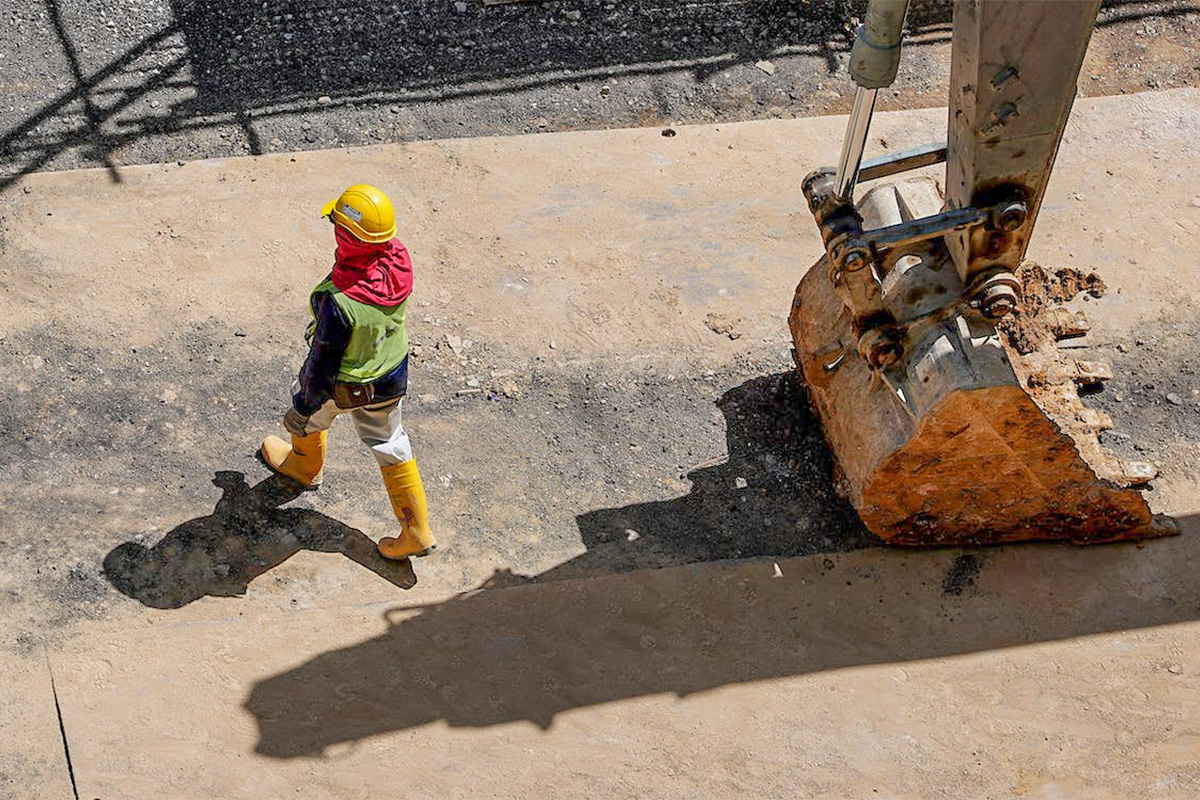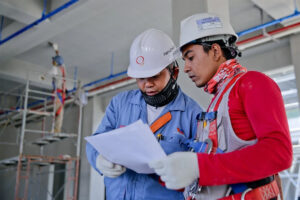
How The Industry Can Fix Its Worker Shortage
Shortages in construction labor have been an ongoing problem in the industry for decades. At the root of the problem is the industry’s failure to promote the many benefits of the trade.
One challenge is that today’s high schools have eliminated trade education classes, directing their dollars and focus on a college education as the only viable option. This myopic strategy doesn’t address those students who can’t afford to go to college or who have no desire to further their education. However, many young people may be unaware of the potential financial and possible career benefits of skilled trades that can give them attractive alternatives to the college path.
The COVID pandemic has exacerbated the steady decline over two decades in the number of young people seeking construction or other trade careers. It is a challenge that the industry needs to address before another generation of valuable employees is lost.
The problem starts at the federal level, where most federal dollars are allocated for college education rather than trade schools. This short-changes young people and the infrastructure of America because it devalues those industries where employees get dirty and physical. It denies students of the knowledge that construction and other trade industries often provide higher salaries, shorter career ladders, and long-term job security than many college required fields.
that construction and other trade industries often provide higher salaries, shorter career ladders, and long-term job security than many college required fields.
Making the construction industry an appealing career choice presents its own challenges, of course. It can be dangerous work, with long days that tend to begin early, often at the break of dawn. But it can also be a path to living a financially viable middleclass life.
Competing With Other Job Fields
One problem facing the construction industry is that today there are other safer and less physically demanding career choices for those who reject the college degree path. This includes career opportunities at fulfillment companies, such as Amazon whose workplaces are mainly indoors, away from the elements that construction workers battle, as well as the less demanding energy and manufacturing industries and chains such as Starbucks. Often these job sources pay less than the construction field, but they can also provide a less dangerous or less demanding working environment.
In addition, the pandemic has encouraged many employees to work from home – an option nearly impossible in construction but appealing to those who fear COVID contagion that can occur in workspaces in close quarters. Working from the comfort of home while eliminating the need to battle traffic and weather elements has also become popular and desired in today’s workforce.
In addition to these challenges is the blame that the construction industry itself has failed tremendously in improving its image and in promoting itself as a positive and respected career choice, especially for young people graduating from high school. It is a failure in branding that must be addressed if the construction field hopes to stave off the growing crisis in worker shortages.
Ways to Rebrand
The construction industry can jumpstart its image by promoting itself as a cutting-edge industry that delivers opportunities to young people who are tech-savvy team players seeking solutions in a state-of-the-art environment. This can help to counter the stereotype of the construction workplace as one of grueling physical labor and risk involving teetering on the sides and tops of buildings. In today’s construction world, modular prefab buildings and computerized equipment could be very appealing to a generation raised on technology.
The construction industry must also become more inclusive if it hopes to get a handle on increasing employee shortages. Today’s younger generation is more racially and ethnically diverse than in past generations. Construction companies need to tap into this diversity and find ways to promote itself as an accepting work environment that promises long term employment and benefits.
In particular, women and minorities should be targeted and encouraged to explore the industry as a positive career choice, one that women especially may not have ever considered. But this involves changing the culture of the industry and making it more welcoming to those underrepresented in the field, starting with dropping the pin-up calendars on job sites and discouraging chauvinistic or stereotype jokes. It also means providing access to mental or physical healthcare and making sure these health issues are no longer viewed as weaknesses or “unmanly,” allowing employees with health problems to heal and then return to work as more productive workers.
Construction companies should also offer free training with the promise of employment once that training is completed. Working to change the college-only mindset in high schools is also important. Communities need to demand that trade courses are once again offered in school, and the pressure to do this needs be done from the federal level on down to the local one. Young people need options beyond the expense of college. The construction trade can fulfill this need by promoting itself as an alternative in demand career choice.
Attracting Younger Workers Via Technology
According to Associated Builders and Contractors, construction companies will need to hire one million employees over the next two years to stave the  hemorrhage of a depleted workforce made worse by the pandemic. In order to do this, recruitment is key and can be done via seminars in high schools and colleges or in the community.
hemorrhage of a depleted workforce made worse by the pandemic. In order to do this, recruitment is key and can be done via seminars in high schools and colleges or in the community.
During these sessions, it will be important to play up the new and improving technological advantages in the construction industry that could be very attractive to Millennials and Gen Z workers who have grown up eating technology for breakfast. These technology provisions can also provide a safer working environment, something that is very important to young people today who often will choose a lower paying job that is safe over a higher paying one that is dangerous.
For example, tools such as exoskeletons are designed to reduce injuries and stress that stems from employees repeatedly lifting heavy objects, rebar-tying robots can complete a task that avoids extreme strain on workers, and drywall robots allow workers to step back from tasks to observe without incurring injuries. On-site software, drones and GPS-guided cranes are other ways construction jobsites are moving into the future, but if young people aren’t aware of these advantages, they won’t view construction in a positive light. This is why recruitment efforts are another important piece of the puzzle in battling the severe workplace shortages of the construction industry.
Four-year apprenticeship programs are also a viable way to shore up labor shortages, particularly since most schools no longer offer Shop classes that often were students’ first introduction to power tools. Apprenticeship programs can provide hands-on training, as well as paid on-the-job experiences, making them a great alternative for students who are not college-bound. These programs often offer scholarships and job site tours to interested students, and in doing so they can become a pipeline of talent into the industry.
Construction Jobs Can be a Way Out of the Unemployment Crisis
For many businesses that were already financially challenged prior to the pandemic, COVID has often been the nail in the coffin. Construction, however, is the exception to the rule in that it needs to hire more workers rather than lay off employees. There has been no downsizing in the need for skilled construction labor, a boom for those looking for work. The challenge will be getting the word out while highlighting the many benefits of a construction career.
The reality is that the construction industry has an aging workforce – the medium age for construction workers is 41. Filling these positions left open by employee retirement and new projects will depend on making sure that skills training is promoted to younger workers who may have no knowledge of the benefits and opportunities that lay before them in the field of construction. It is a large potential workforce that is just waiting to be tapped.
